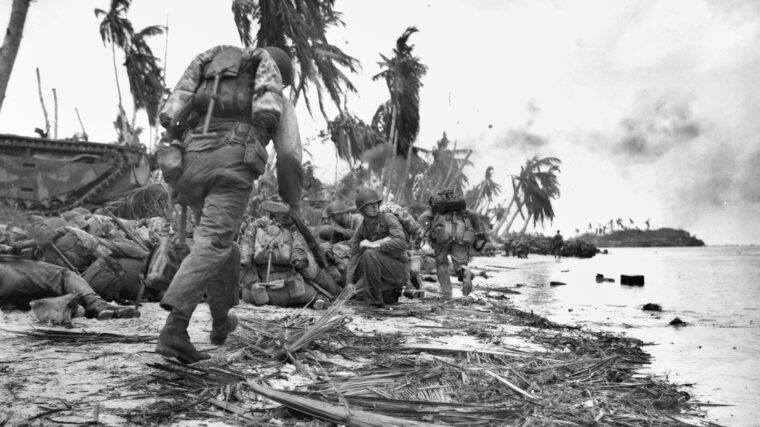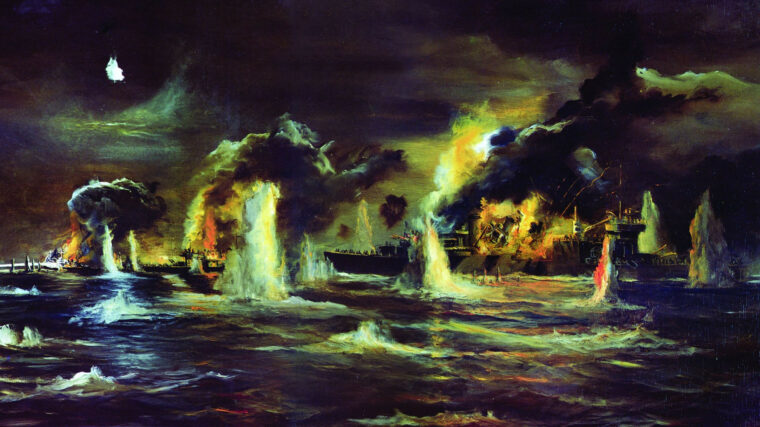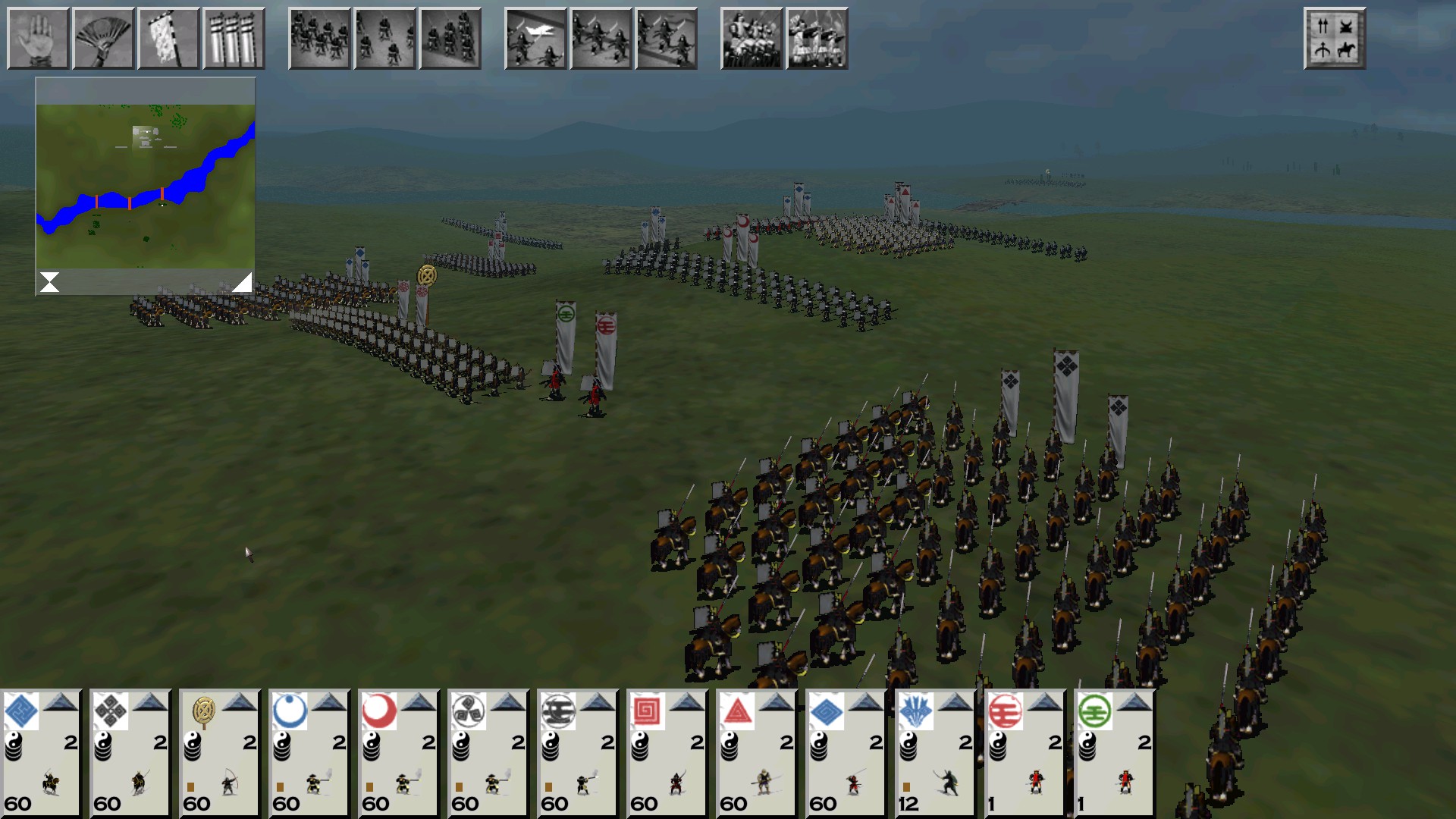
Japanese
Shootout in the “Slingshot”: First Day of the Guadalcanal Campaign
By John J. DomagalskiThe fading daylight of August 6, 1942, found the American heavy cruisers Astoria and Chicago as part of Task Force 61, under the command of Vice Admiral Jack Fletcher, steaming toward the South Pacific island of Guadalcanal. Read more






















